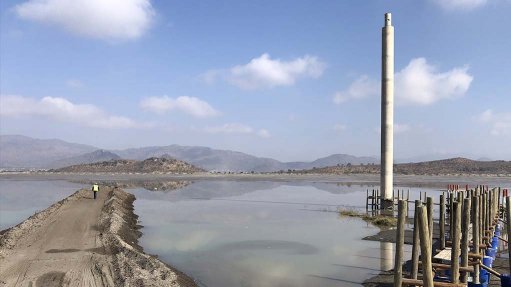
+27 11 441 1111
SRK House, 265 Oxford Road, Illovo, 2196, South Africa

Droughts, Floods and Contamination: the triple threat to African mining investments
Water availability is a key investment risk to mining in many African countries, adding to the range of risks that will come under the spotlight at the Investing in African Mining Indaba in Cape Town in February 2024.
In a session on de-risking mining investment, to be held on 6 February, the focus will include infrastructure and regulations – both pertinent to the allocation and access to water for projects. According to Peter Shepherd, partner and principal hydrologist at SRK Consulting, water allocation demands early attention and a commitment to meeting stringent compliance and best practice requirements. Shepherd highlighted that national regulations are often onerous, and any project’s motivation for a water use licence needs to be both detailed and scientifically sustainable.
“Many parts of Africa are dry, and competition for water grows steadily with development and human migration, as well as climate change,” he said. “In southern Africa, for instance, countries like South Africa, Namibia and Botswana are increasingly careful about how water supply is allocated.”
Feasibility too late
Any new mine development therefore needs to establish at a very early stage that there are in fact water resources available – and to investigate the terms for access to such resources. This is no longer an issue that can wait until the pre-feasibility or feasibility stages of a project, he emphasised.
“There was a time not too long ago when a mine would generally be able to find a reasonable water supply from somewhere,” he said. “Today, there is a very real possibility that the water required to develop a mine is simply not available; even where a prospective ore body is defined, it is difficult to exploit it without the necessary volumes of water.”
Desalination
A government decision in Namibia has meant that new mines will use desalinated water, for example, which is often piped many kilometres to the mine site where it is used. Steps like these are important for managing national water resources, but do have a cost impact on mine development projects. These costs must be budgeted for well in advance; as importantly, the necessary permitting, infrastructure and licencing processes to apply for access to water must also be initiated as early as possible.
“Even where there may be groundwater in the vicinity of a project in a low-rainfall region – such as 50-100 metres under a river bed – the developers may be instructed by water authorities to source water from other sources further away,” said Shepherd.
Settling times
The actual water demand for each project also needs to be carefully analysed, with due regard to the different types of mines. Processing of certain minerals is generally more water-intensive than others, but there may be high silt or clay levels that raise water ratios and settling times.
“Recycling of water is always important, and this process usually includes the settling out of suspended solids before water can be re-used,” he said. “Longer settling times need to be taken into account in designing the necessary infrastructure.”
He notes that many mines struggle with the silting up of water storage facilities over time; the lining of pollution control dams with geo-membranes in recent decades makes it risky to dig out silt using mechanical equipment. This has resulted in greater efforts to restrict the inflow of silt at source, through features such as silt traps – from which the sediment can be more easily removed.
Resilience
While mines work to reduce their carbon footprint as part of their contribution to the planet’s future, there are also impacts which climate change is already having on operations. Rainfall patterns are changing; even where the annual rainfall remains similar, there are more exaggerated peaks and troughs – heavy downpours followed by long period of little rain, for instance. Mines have always needed to manage water levels through and between rainy seasons, but it is becoming more challenging.
Return water dams and settlement ponds need to retain as much water as possible for the dry periods, while still having capacity to absorb extra water during the rainy season. Variations to historical rainfall patterns means that extra capacity is needing to be designed into this infrastructure.
Water quality
“Mining with less water also requires better containment strategies for water of poor quality,” he said. “Recycling and re-use inevitably concentrates the level of salts and metals, and mines then need to isolate this water so that it can be either chemically treated or removed from site altogether as a hazardous liquid.”
Shepherd emphasised that a mine’s water management strategy is increasingly part of its social licence to mine, as any use of this scarce resource must be seen to be equitable. Engagement with local authorities and communities is crucial in this respect, allowing new water infrastructure to be developed collaboratively. Especially where water is being transported long distances to the mine, additional distribution networks to local communities can be planned and implemented.
Managing water scarcity through modelling
Water resources modelling is becoming more important as a tool to help plan and manage South Africa’s scarce water supply.
Kerry Grimmer, a principal hydrologist at SRK Consulting, has emphasised that this modelling has to consider complex hydrological systems, the uncertainty of climate change, and the protection of the environment.
“Reservoirs and water supply systems are generally sized and operated based on studies which use long-term historical hydrological data, most notably streamflow and rainfall data,” she explained. “From these studies, operating rules are developed, allowing dam operators to manage their dams by maximising water resources.”
This helps ensure the security of water supply for users, such as the mining industry, to sustain and develop the economy of the region.








